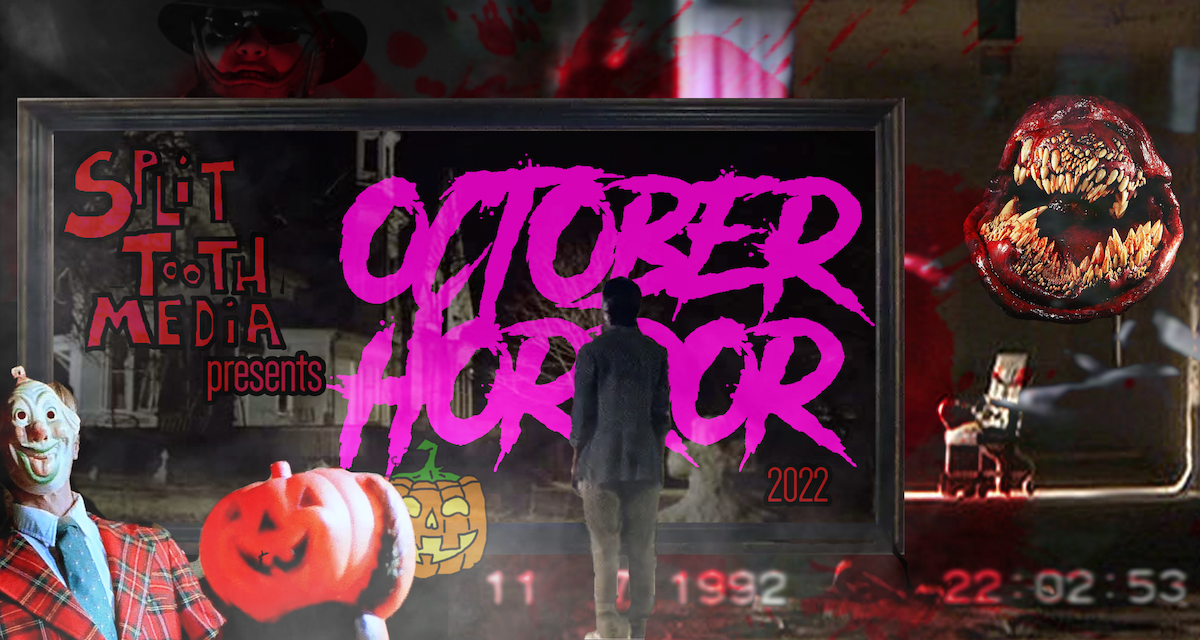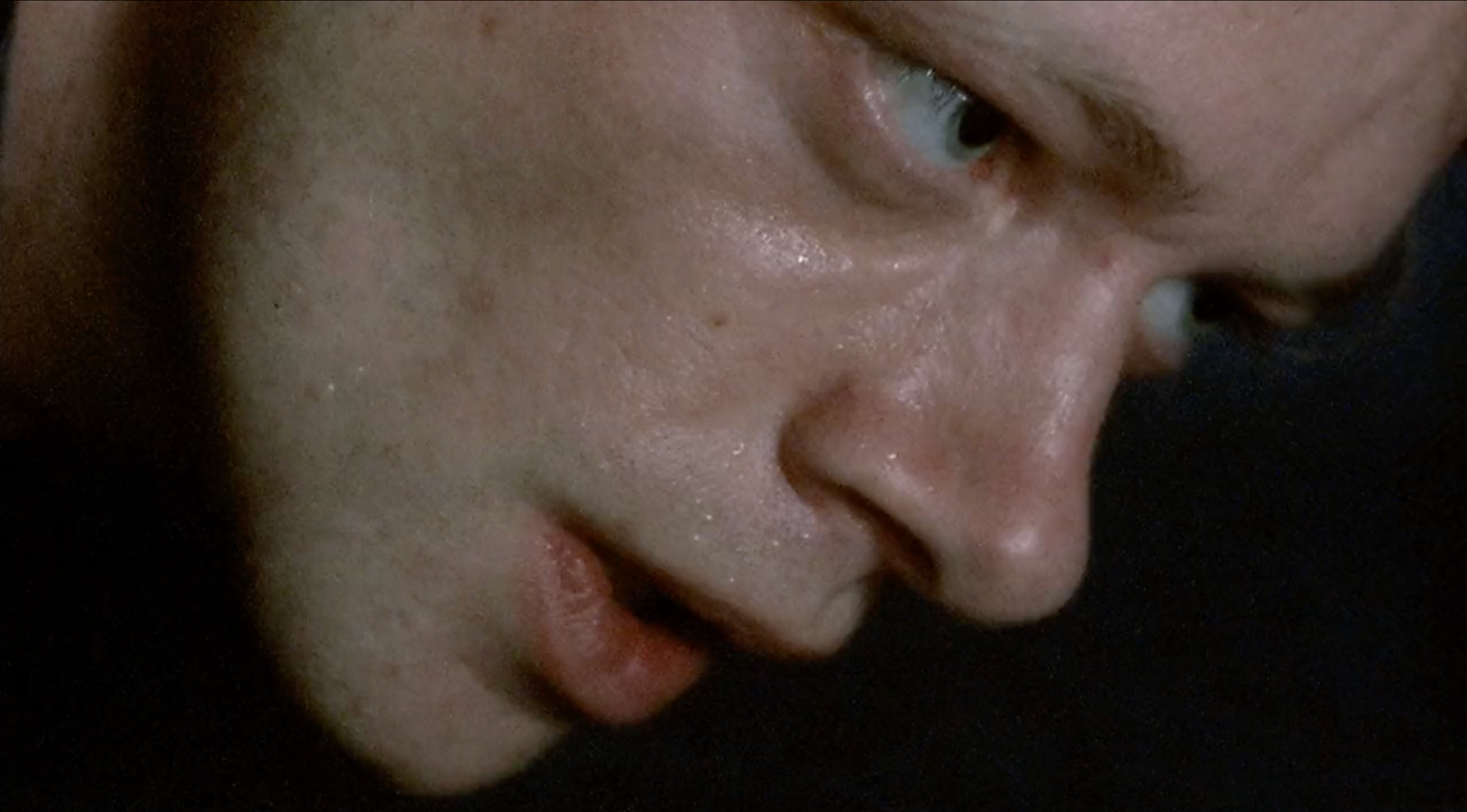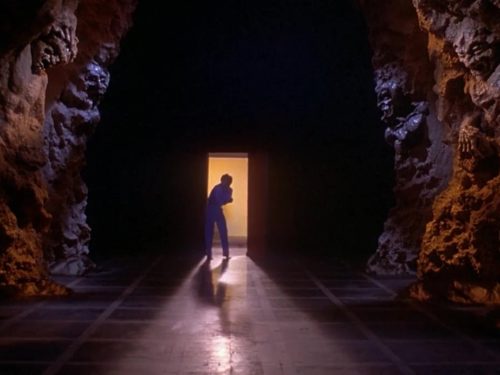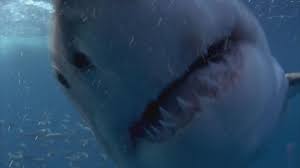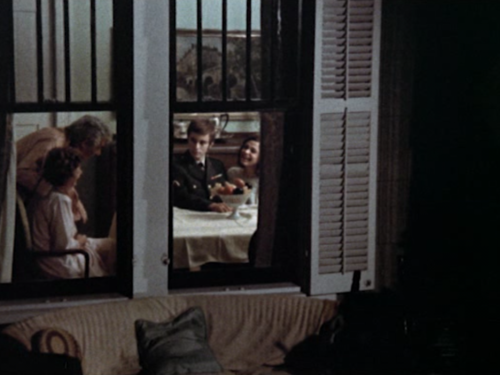With wild-eyed, unpolished energy, Angst stares fearlessly into the dark soul of a monstrous killer
“The thought that I could have the corpses with me all the time excited me tremendously.” — K., The Psychopath
Gerard Kargl’s Angst (1983) has a Psycho fixation. The Austrian director’s standalone black gem lives entirely in the post-shower scene abyss. The film is the most deranged progeny of the massively influential sequence where a desperate Norman Bates scrubs the bathroom, gathers the evidence of Marion Crane’s stay, and disposes of her body wrapped in the shower curtain. Following Marion’s murder, and the twisting shot out from her lifeless gaze, a void opens up in the middle of the movie, and we’re forced squarely inside the mind of a madman. Angst takes this full tilt. And it’s riddled with connections to Hitchcock’s proto-slasher, up to and including a curious, desperate, inherently perverse camera with a mind of its own. It even features a scene where a car briefly spins its wheels in the mud in the aftermath of the murder, an incidental reminder of the infamous pregnant pause while Marion’s Ford Custom 300 sinks into the bog.
“The fear in her eyes and the knife in her chest; that’s my last memory of my mother,” is the first line of Angst, spoken in voice over. Matricide (attempted, in this case) is again at the core of the main character’s story. The killer in Angst — unnamed but billed as K., The Psychopath (Erwin Leder) — is consumed by his twisted upbringing and his relationship with his mother. He commits crimes of opportunity and impulse. He’s voyeuristic and has barely suppressed psychosexual desires. Both films are pulled from the serial killer folklore of their respective country’s collective unconscious: Psycho was inspired by the life and crimes of Ed “The Plainfield Ghoul” Gein; Angst is based closely on the real-life case of convicted Austrian killer Werner Kniesek, who, in 1980, committed a random triple murder in St. Pölten. In the end, both films conclude with a pat diagnosis from a psychologist, tidy interpretations that the protagonists see straight through. But Psycho is a product of another age. Angst is a different beast. It’s a cold, bleak, sinewy, and unrelentingly nasty film. It is a vile and unflinching depiction of a decade of pent-up bloodlust unleashed on a random family, a methodical dissection of homicidal madness with shades of Psycho, yes, but also A Clockwork Orange (1971) and exploitation fare like Deranged (1974), another first-person Gein bite. It has the flavor of snuff but also striking artistic aspirations, anticipating alienating arthouse serial killer movies of the future like Funny Games (1997), Henry: Portrait of a Serial Killer (1986), and The House that Jack Built (2018).
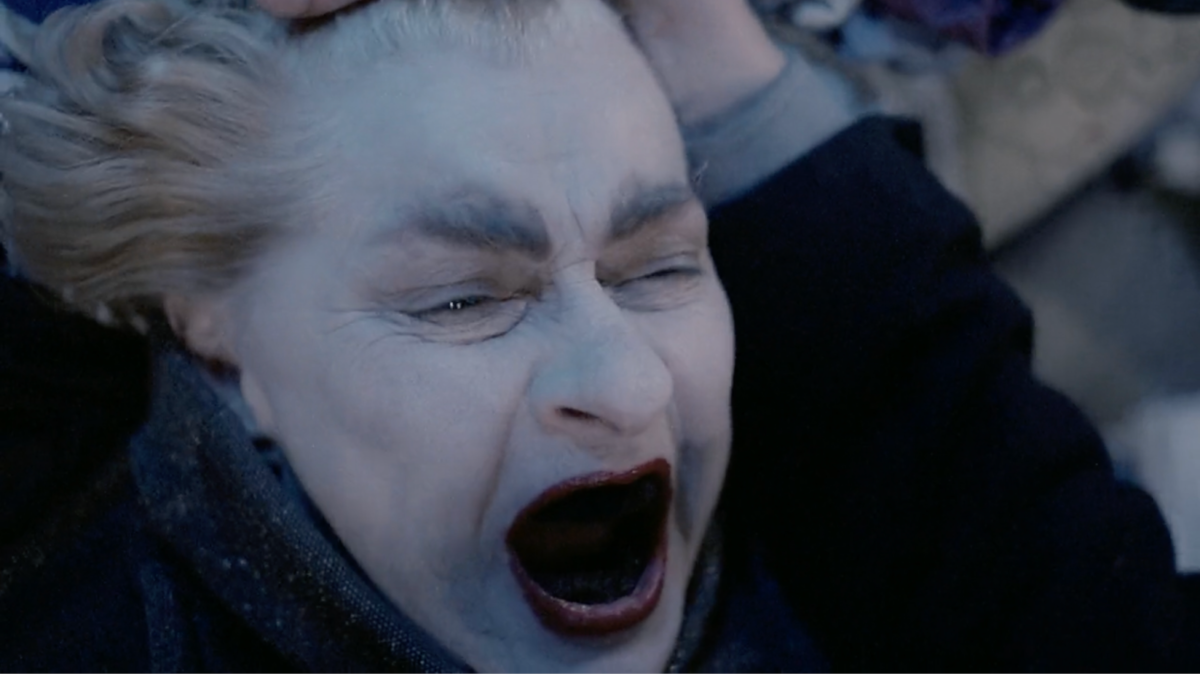
Upon his release from prison, after a 10-year term for a random killing of an elderly woman, K tells us up front, in voice over, that his single goal in the outside world is to find someone to kill. His inner monologue dominates the film, chronicling his every thought and action. The film opens in the final minutes of his incarceration as he is led out from his cell to the street. Then we track his murder spree during his one day of freedom. He has some perfect model in his mind, a fantasy scenario he is consumed by, that he hopes to recreate. But he is so impulsive and feral as to be inscrutable. Even his running wall-to-wall voice over, conveyed dispassionately in fits and starts, obscures his motivations, revealing an irreparable psyche more than a clear line of causation. The film really locks into his objective and sees it all the way through, in excruciating detail. Once he’s released, he’s on the hunt. He first comes across a cafe and has a meal, consuming sausages and mustard as if it’s an extension of his violent impulses, his disgusting masticating confuses his cravings into a single biological urge. He eyes two girls at the counter but feels he’s being watched so he decides to move on. He takes a taxi and tries and fails to strangle the taxi driver with his shoelaces. After fleeing through the woods in a panic, he comes across a random villa and selects this spot as his perfect location. It’s in this house where most of the movie takes place. It’s here that The Psychopath terrorizes and murders a family to satisfy his desires.
He stalks the grounds then shatters a window. As K cases the house and gets a feel for the layout, he finds a man in a wheelchair (Rudolf Götz) alone. The mother (Edith Rosset) and daughter, Silvia (Silvia Ryder), soon return with groceries. K ambushes them all in a sudden burst, knocking the son from his chair, subduing the mother, and tying the daughter’s ankle to a doorknob. First, he attempts to strangle the mother, but ends up leaving her unconscious in a state of shock. K tracks the son upstairs and drowns him in the bathtub. After unsuccessfully trying to revive the mother, he finishes her off. Silvia attempts to escape and K chases her down the stairs and into a dank corridor that leads beyond a man-made pond to the back gate. In this grisly climax, he stabs her repeatedly and blood — pig’s blood, really — spurts out on his face and across the walls. The life drains from her face until she is pale blue. After she’s dead, he sucks the blood from her neck and immediately vomits. The camera tilts up and a jump cut reveals him still atop the body but now with his pants down, the ellipsis loaded with necrophilic implication.
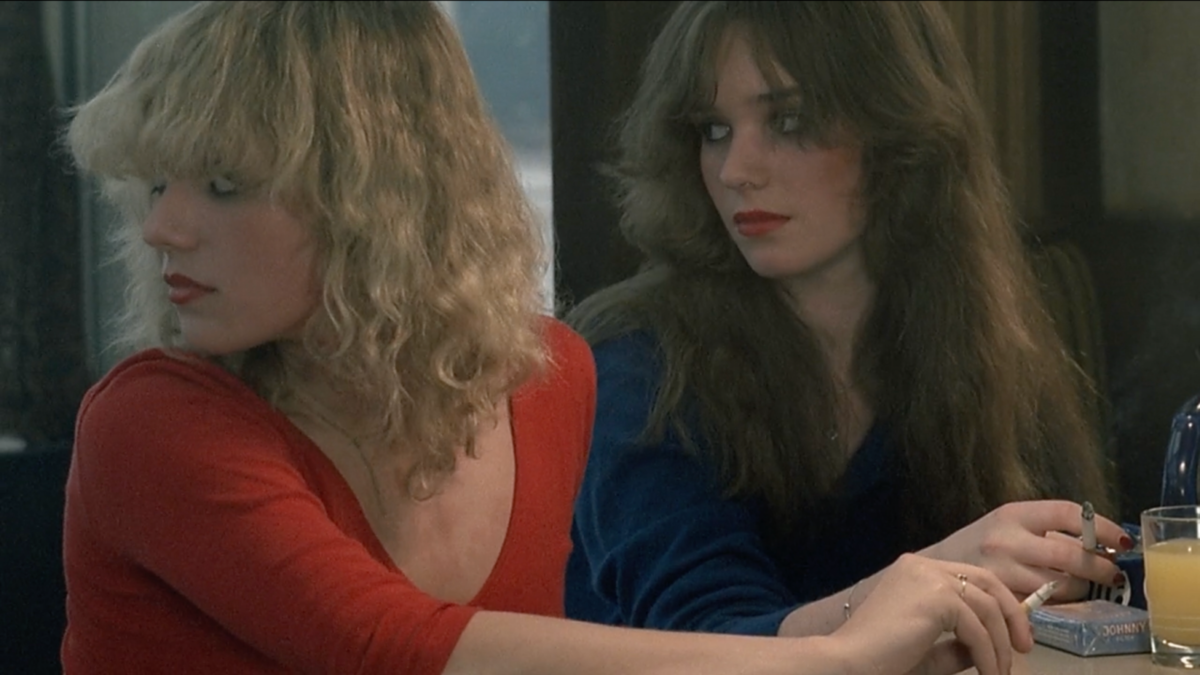
Kargl and his cinematographer Zbigniew Rybczynski (also credited as screenwriter with Kargl), photograph each scene of Angst within an inch of its life. It is a feverish and disorienting film, an ugly, sweaty, and unyielding assault on the senses. The film is full of experimental, off-kilter movements and angles — sweeping crane shots, lengthy tracking shots, jittery hand-helds, extreme close ups of characters staring straight into the lens. Composer Klaus Schulze (formerly of Tangerine Dream) provides the tinny techno-trash soundtrack, but there are also long stretches of silence and almost no dialogue. Much of the remaining score consists of repetitive sound design: Dripping water or rhythmic footsteps give the uneasy feeling of inevitability. And the Foley match is imprecise and unnatural, things like the scuffing of K’s boots against the ground or the shattering and crunching of glass heightened, echoing, and piercing. Kargl and Rybczynski devised a sophisticated rope system to create the roving, semi-fluid, swiveling tracking shots, situated at alternating extreme high or low angles, that follow K as he skulks. Even more destabilizing, and technically impressive, is the camera tethered to Leder himself, a bounding, rotating variation on a mounted cam (a highly unconventional technique famously resurrected in Pi [1998]). It keeps The Psychopath in focus, even as the world pulses, throbs, and streaks around him. We’re in orbit around K, encircling this vicious surrogate but unable to break free from his gravitational pull. And most of the shots in the film were achieved via a mirror system, allowing for strange, disorienting, warped angles and perspectives. Angst is somehow both incredibly raw and expressionistic.
The production was so expensive that it effectively bankrupted Kargl, who never directed another feature film. Before Angst, his first full-length feature, Kargl had made a few short films, founded and organized the Austrian film festival Die Österreichischen Filmtage, and was the founder and editor of the Austrian film magazine Filmschrift. Angst was almost entirely self-financed, with Kargl going deep into debt to make it. Once completed, Angst had a tumultuous release that effectively buried the film. It was banned in many countries, earned an X rating in France, and, in the US, the film was rated XXX, causing distributors to back out. “I was ruined for years after that,” Kargl said, lamenting the ballooning €400,000 budget that sank his career. Kargl retreated to relative stability. His career after Angst consists of work making commercials and the odd commissioned documentary. Rather than feeding into its cult stature, Angst was lost to time, with neither the pedigree nor the wily subcultural appeal to give it legs as an underground object of fascination.
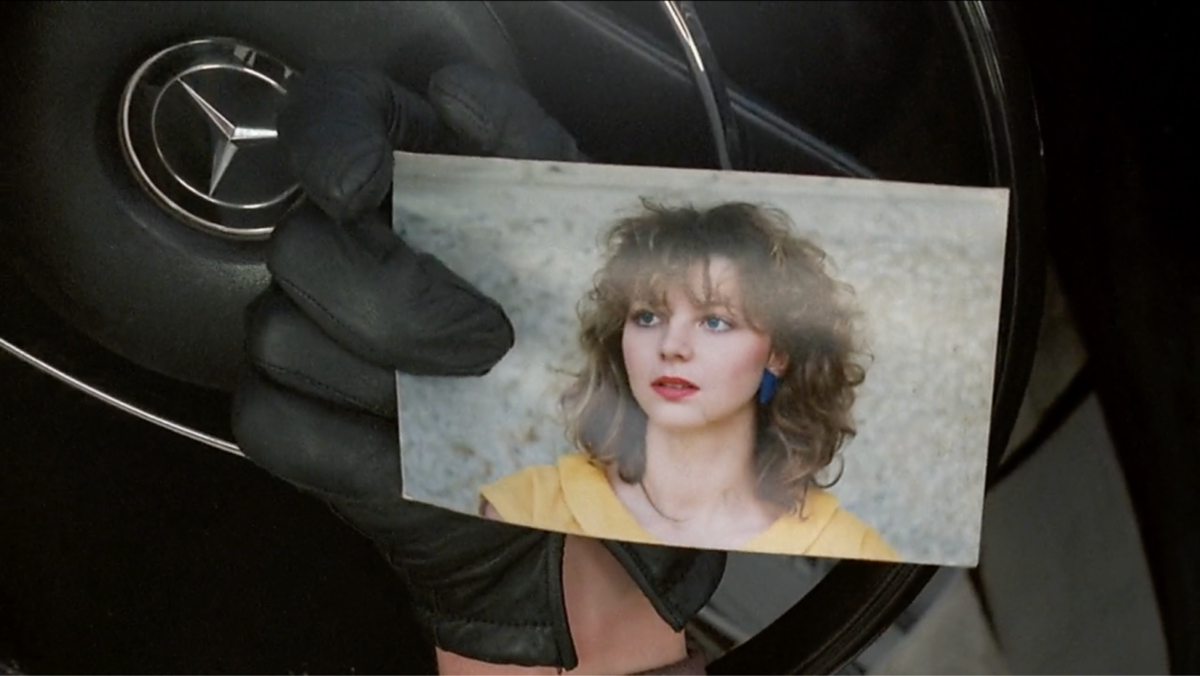
The film only gained some modest notoriety from Gaspar Noé championing it as a key inspiration on Irréversible (2002). Instead, it lives on as a repulsive endurance test to be discovered. Kargl’s zealousness, and his deep investment in the material, comes through. Angst has a wild-eyed, unpolished energy that gives it a charge even in its most grueling scenes. The film has moments of amateurishness, preserving camera jitters and character moments that feel like mistakes. But over the course of 79 minutes, these elements morph into a distinctive, frayed style that effectively replicates an adrenaline rush. Few films are so willing to stare into a black hole without blinking. It doesn’t give us any outs when it comes to bearing witness. We’re in the middle, up close and personal, arguably complicit. We are methodically drawn deeper into an alien, antisocial worldview. We don’t sympathize; that is never an option. K is pitiful, not pitiable. But we’re forced to understand how this atrocity precipitates.
The last third of Angst is about the aftermath of the murders. K drags the son’s and the mother’s lifeless bodies across broken glass, down the stairs, and through an underground tunnel. The gratuitous act of watching The Psychopath labor over lifeless corpses is a perfect conduit into his damaged brain. No movie has committed so thoroughly to the ugly, sickening work of moving dead bodies. You feel the arduousness of his task: the effort it takes to carry around the heft of dead weight, haul it across the entirety of the distance, and then the difficulty of stuffing three corpses into a compact car trunk. We cross well beyond the rubicon separating a crime of passion from the brand of unbridled psychopathy witnessed here at length. In the moment, he decides to double down. He’ll find more victims. And not only that: he’ll use the corpses of the first three to amplify the fear of the next targets. His sexual gratification will continue to compound as the body count rises and the scenarios become ever more elaborate. His goal changes from killing to a more sensorial, performative kind of violence that ends in drawn out terror and a crescendo of death.
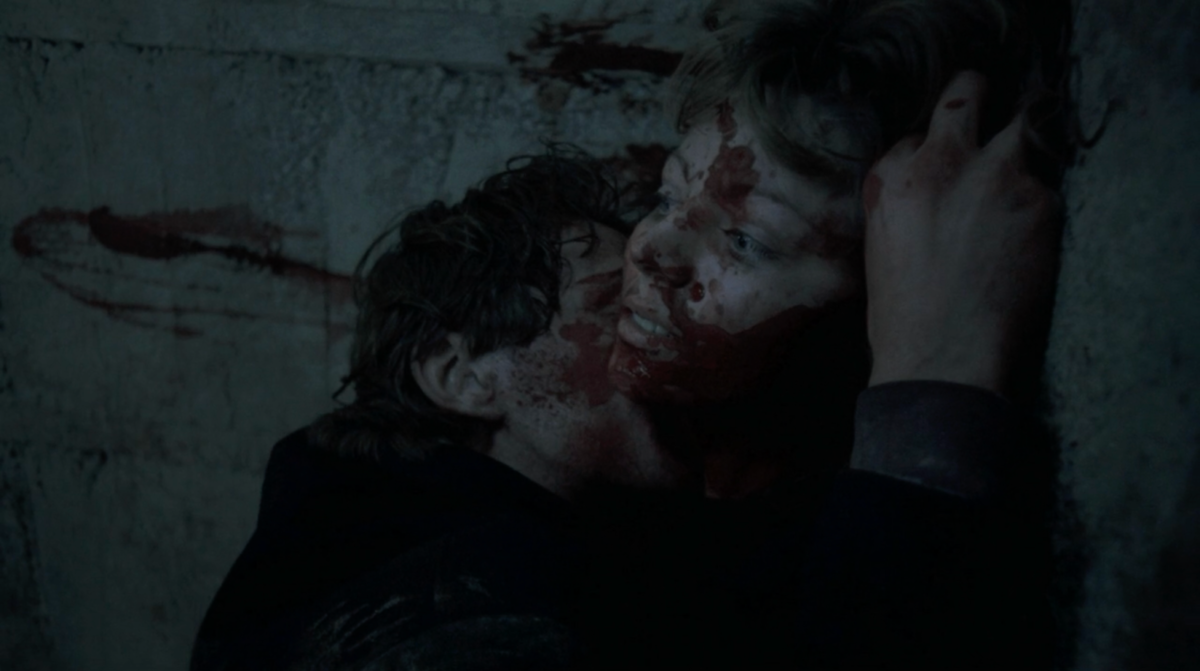
Most serial killer movies are about crime and punishment, cat and mouse, predator and prey. Even slasher movies with shapeless embodiments of elemental evil often adopt the perspective of the stalked and the forces trying to destroy the unstoppable presence. The killings in Angst are inevitable and the film observes the ugly process of seeing each one through from start to finish. The house is an enclosed, delirious, and inescapable setting without the Rube Goldberg elements that so often play into home invasion scenarios. K doesn’t lurk in wait for his victims to fall into his trap. He is a hasty, impulsive, often incompetent attacker. He rushes into frame and his actions aren’t linear. After he has committed the murders, he has no fear of reprisal, no tangible concern of getting caught. In the final minutes of the film, he returns to the cafe, covered in dried blood, and has another sausage. When he is tracked down, almost incidentally, he acts more confused than cornered. Angst has an underdeveloped superego and a swollen id. “I wanted to live out my fantasies,” K says. “At the moment, I didn’t care where that would lead.” Weaving a tapestry of evil thoughts — compiled from testimony by Kniesek as well as confessions from other real-life killers like Peter Kürten (aka the Vampire of Düsseldorf) and Fritz Haarmann — Kargl taps into an incomprehensible derangement that operates outside norms and systems of justice.
The use of voice over throughout Angst is radical and complex. K’s thoughts, motivations, and traumas are right there on the surface, top of mind. Clear lines are drawn between past, present, and future, but everything is distorted and unreliable. It recalls the detached use of voice over in Badlands (1973) but without any of the lyricism. We begin in the past, with K revealing the string of crimes that led to his incarceration. Once he’s on the street, he snaps to the present, voicing the urges bubbling up inside him. In the taxi, he recalls his first sexual encounter, with an older woman, and involving bondage. Once the assault is in progress in the house, he waxes nostalgic about his traumatic childhood, recounting all the adults who were unwilling to care for him — passed off from his mother to grandmother to stepfather. The editing is exact, drawing one-for-one connections. The subject of his thoughts and the target of his violence intersect. He’s targeting a family unit and formulating a fantasy dynamic is his mind as he goes about his business. When he attacks the son, who is only able to say “Daddy,” he talks about his stepfather. When he strangles the mother, he talks about his mother and grandmother. And when he assaults Silvia, he talks about his sister. The voice over suddenly shifts from the past to the present midway through the assault, as reality sets in and he’s suddenly dissatisfied. The mood takes a sharp turn as the picture in his mind mutates and the thrill is suddenly less potent. “It went all wrong,” he realizes. “Everything happened too fast. I had imagined it totally differently. Much, much more dramatic.” But then, at the film’s blackest moment, during Silvia’s slaughter and defiling, his mind shuts off. The silence is as disturbing and unshakable as any of his confessions. This is pure mania, a depiction of uncut animal release.
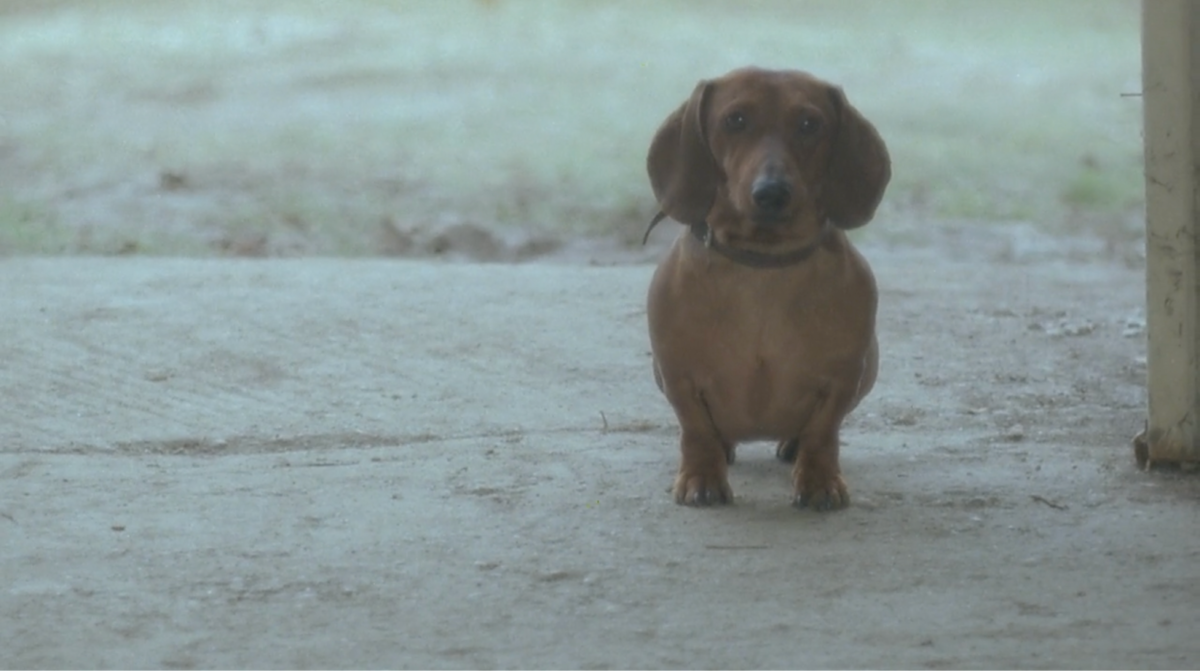
For all its immediacy and primitive energy, Angst is also bizarre and surreal. Strange touches take this out of the realm of realism and put it in some heightened plane where the viciousness is thrown in stark relief. The interior of the house is unnervingly empty, with a mattress in the middle of the living room and no furniture or decorations. It looks uninhabited, temporary, not at all an idyllic family dwelling, unlike the cozy domiciles in most home invasion thrillers. The three victims are indescribably off as well. The son is barely aware of his surroundings and has almost no reaction to any of K’s actions. The mother’s face is pancaked with white face makeup; she looks like she walked out of a Roy Andersson diorama. And Silvia displays some off-putting quasi-arousal towards K when the two writhe across the floor — she even licks his face — to get the mother’s medicine. The silence during the whole attack is inexplicable. The daughter is oddly quiet and submissive, barely making a sound as she struggles, and as her mother is attacked and strangled in front of her. The mother wriggles free and saunters away at one point but shows no emotion or urgency. And the son passes up any chance to escape or seek help, even crawling past a ringing phone. The death of the mother is jerky and unnatural, a strange rupture in the film. K shoves her wheelchair across the room, it explodes a lamp, and she collides and stiffens flat against the wall. She remains there dead, but somehow standing until her body is dragged underground. It’s all part and parcel with Kargl’s unconventional and topsy-turvy technique.
During its bleakest moments, elements of physical comedy are injected into the melee. They make the film feel paradoxically darker — incongruous flashes of light that deepen the pitch black. When K attempts to revive the mother, they enact a twisted slow dance. When K chases Silvia into the gutter, she kicks a small soccer ball that’s in her path. And Kargl continues to cut back to this rolling ball as she expires. Once he has freshened up after the murders, K puts on a ridiculous oversized white coat, with giant lapels and long coattails. When he busts out of the gate in the Mercedez, he rear-ends the first car he comes across on the same street, and is promptly encircled by school children waiting for the bus. And then there’s the dog (Rybczynski’s pet Kuba). The squat dachshund follows The Psychopath’s every move through the house, observing each grisly moment and happily playing through it all. When K collapses — sweat soaked, pupils dilated, mouth agape and dry, experiencing some grotesque amalgam of ecstasy and agony — the dog comes over and sniffs his crotch. He picks up the mother’s dentures after she’s attacked the first time. The dog plays with the ball and barks in the background as Silvia is butchered. And the dog hops in the car and rides along as K makes his escape and finds himself back at the cafe for another sausage plate. The absurdity of this weiner dog’s presence makes K’s fear and impotence stand out. The Psychopath is a monolithic monster, but really he is just a damaged man capable of evil acts. Angst has zero interest in glorifying or romanticizing. It burrows deep into the recesses of the mind of a psychopathic killer and discovers that he is equally terrifying and pathetic.
Purchase Angst on Blu-ray from Amazon
Stream Angst on Amazon Prime
Stay up to date with all things Split Tooth Media and follow Oliver on Twitter
(Split Tooth may earn a commission from purchases made through affiliate links on our site.
Find the complete October Horror 2022 series here:
